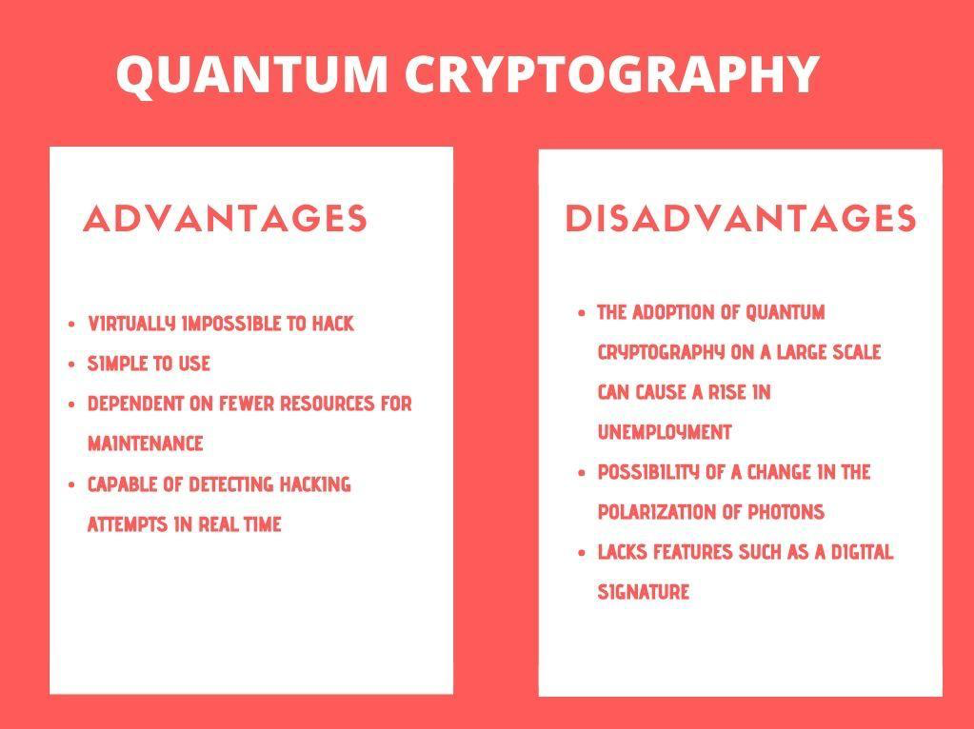Quantum cryptography represents a bold frontier in the landscape of cybersecurity, offering unprecedented promises in secure communication. However, despite its revolutionary allure, potential pitfalls accompany its implementation. This article delves into the disadvantages of quantum cryptography that should not go unnoticed.
First and foremost, the complexity of quantum cryptography cannot be overstated. The principles underpinning quantum mechanics are inherently intricate, creating a steep learning curve for those not versed in physics or quantum theory. This complexity poses a significant barrier to widespread adoption. Organizations attempting to integrate quantum cryptographic systems confront substantial challenges in training personnel and establishing their operational frameworks. The advanced knowledge required to comprehend quantum principles can deter many potential users, limiting the technology to a niche audience skilled in sophisticated scientific disciplines.
Moreover, the technological infrastructure needed for quantum cryptography is remarkably expensive. Quantum communication often necessitates specialized hardware and sophisticated setups, such as quantum key distribution (QKD) systems. This initial investment can be prohibitively high for smaller organizations or entities with limited budgets. The costs extend beyond just initial setup; the maintenance and updates of such technology also require financial resources that not every organization can allocate. Thus, while quantum cryptography provides an advanced solution for securing communications, it also creates economic barriers that could hinder access and usage.
In addition to cost, the practicality of quantum cryptography faces scrutiny. While it yields theoretically flawless security owing to the principles of quantum mechanics—especially the phenomena of superposition and entanglement—real-world applications often reveal vulnerabilities. Current quantum networks are confined to short distances, necessitating a reliable interface with classical networks. This limitation hampers its effectiveness in a globally interconnected environment. A robust quantum communication network capable of operating at an extensive distance is still in developmental phases. Therefore, the impracticality of achieving seamless integration with existing systems complicates its appeal.
Furthermore, quantum cryptography is not immune to cryptographic adversaries. While it elevates security through quantum mechanisms, this does not preclude potential attacks. Researchers have proposed various tactical assaults on quantum systems, such as photon number splitting attacks and intercept-resend strategies. Although these attacks are nuanced and sophisticated, they illustrate that no system is entirely impervious. The knowledge that even the most advanced cryptographic protocols can harbor vulnerabilities may deter entities from fully embracing the technology.
Another notable disadvantage is scalability. The very features that enhance security, such as the quantum states of light particles, create challenges when translated into larger systems. Scalability issues arise primarily due to the sensitive nature of quantum states, which can easily degrade or collapse under certain conditions. Establishing a broad quantum network poses significant technological hurdles to preserve the integrity of quantum states over extended distances and across numerous nodes. Thus, the feasible deployment of quantum cryptography on a global scale remains an ongoing challenge for researchers and developers.
The issue of interoperability also surfaces in discussions regarding quantum cryptography. As new systems and protocols emerge, the challenge of ensuring that various quantum cryptographic platforms can communicate effectively becomes paramount. Current cryptographic solutions range widely in their designs and methodologies, making it difficult to create universally compatible systems. A lack of standardization may lead to fragmentation in the market, creating further complexities for organizations exploring quantum encryption solutions.
Another critical aspect to consider is the impending quantum threat posed by advancements in quantum computing. While quantum cryptography is designed to safeguard against various forms of classical hacking, the rise of powerful quantum computers threatens traditional encryption methods, and the bridge between classical and quantum cryptographic integrity remains tenuous. If powerful quantum computers were to become operational before quantum cryptography becomes a universally adopted standard, there is a risk that existing cryptographic systems could be undermined. This anticipated quantum arms race highlights the perils of premature reliance on untested technologies.
Ultimately, the future of quantum cryptography is entwined with regulatory and legal frameworks that are not yet firmly established. Policymakers face the daunting challenge of crafting laws and regulations that address the unique aspects of quantum technologies while ensuring the security and privacy of users. This legal uncertainty may further complicate the adoption of quantum cryptography, engendering hesitation among potential users due to fears of non-compliance with emerging frameworks. In an environment characterized by rapid technological advancement, aligning legal standards with innovative practices presents considerable difficulties.
Lastly, the broader epistemic shifts required to embrace quantum cryptography are non-trivial. Shifting away from classical approaches toward quantum solutions requires not only technological adaptations but also a change in mindset. Educating users and stakeholders about the implications of quantum technologies, along with their potential advantages and disadvantages, is vital. However, this transformation may encounter resistance from individuals and organizations accustomed to traditional cryptographic methodologies.
In conclusion, while quantum cryptography stands as a beacon of hope in enhancing internet security, its disadvantages demand careful consideration. The usability challenges stemming from complexity and cost, practical limitations regarding distance and scalability, threats from quantum computers, and the need for regulatory frameworks represent significant hurdles. Organizations weighing the benefits of quantum cryptography must navigate these complexities and remain aware that while the technology promises unparalleled security, it is not devoid of pitfalls. Understanding these disadvantages is crucial for informed decision-making as the digital landscape continues to evolve.








Leave a Comment